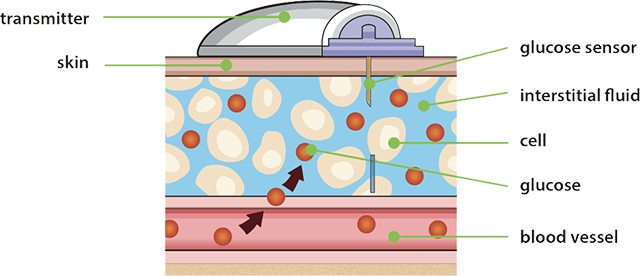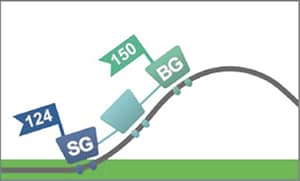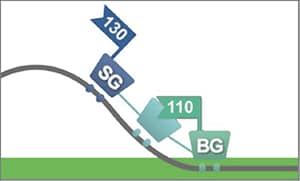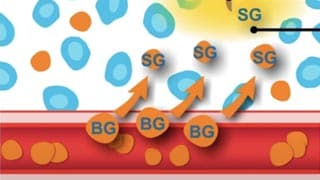Sensor glucose vs. blood glucose:
Why sensor glucose does not equal blood glucose
Your blood glucose meter measures glucose levels in your blood. The glucose sensor measures glucose in the fluid surrounding your cells. Glucose travels between these two areas. Most of the time glucose travels from your blood vessels into the fluid. So, your blood glucose (BG) meter readings and sensor glucose (SG) readings – let’s call them BGs and SGs – will be close but will rarely match exactly. This difference is normal and should be expected.

It’s helpful to think about it like a rollercoaster where the front car is the BG and the car in the back is the SG.


When on the rise, the BG value is greater than the SG that follows behind it. But when moving down the tracks, the BG in front is now less than the SG value.
When glucose levels are rising or falling quickly, you should expect to see an even larger difference between your BG meter reading and the sensor glucose readings.
Examples:
- after meals or giving insulin
- during exercise
- when arrows appear on your device screen
This video illustrates the difference between BG and SG.
Blood Glucose and Sensor Glucose: What’s The Difference?
Tip: Knowing the direction and speed of your glucose changes will be more useful than focusing on individual BG or sensor readings.
When using continuous glucose monitoring (CGM), trends are the key. In fact, seeing trends and patterns in your glucose is likely one of the main reasons you started using CGM therapy. Trends highlight the direction that your sensor glucose readings are moving and the speed at which they are changing.
Fingerstick blood glucose readings or sensor glucose readings are only snapshots of your glucose at that very moment. Trends can tell you if your glucose has been rising, falling, or appears to have been stable over several minutes, hours, and even the day. These can help you make meaningful treatment decisions throughout the day.
Visit our support center for more information about sensors and transmitters.
Sensor and transmitter support User guides and manuals

